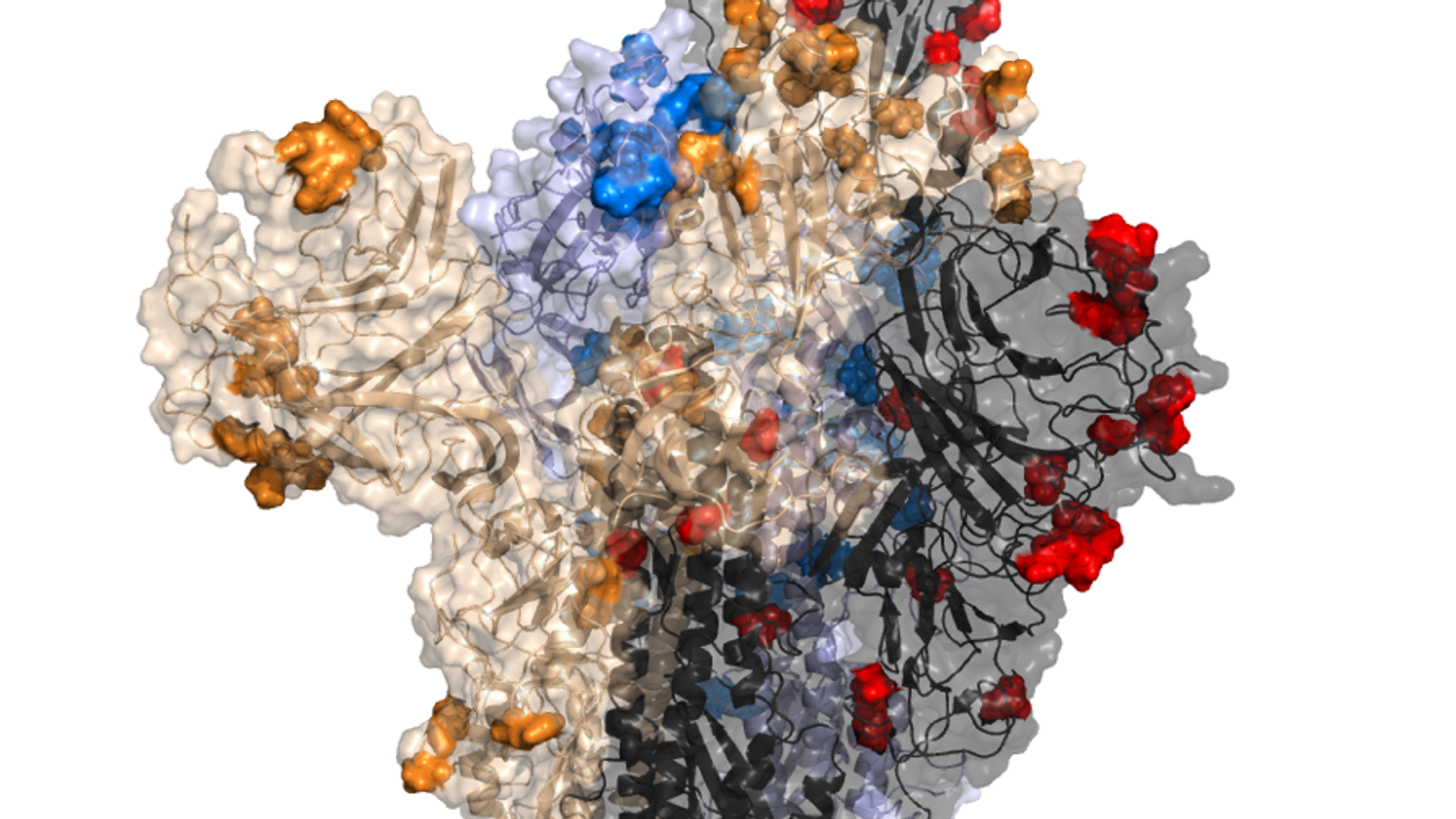When it comes to questions about the Omicron variant, scientists are starting to sound a bit like parents on a long car journey.
Is it more infectious? More deadly? Could it sidestep our vaccine defences? The most precise answer they seem to be able to give is that “it’s too early to tell,” or “we just don’t know yet.”
At the heart of all that uncertainty is the fact that knowing a virus’ genetics (which we do for Omicron) can be a terrible guide to how it might behave in the real world.
Please use Chrome browser for a more accessible video player
No doubt that compared to previous COVID strains Omicron is seriously altered. Its array of 50 or so mutations, 30 of them in the spike protein, has been likened to its having gone to an “evolutionary gym”.
The virus appears to have had time to work out its genome, accruing not just one type of potentially advantageous mutation seen in other variants before, but acquiring many different versions of each.
Live COVID updates from the UK and world
That’s the reason for worry. And the fact that it appears to be growing in numbers in South Africa, which means it’s not just some genetic body-builder. It has the ability to spread.
COVID-19: Commuters back return of mask-wearing in England amid Omicron spread
EasyJet sees softening of bookings as COVID restrictions grow amid Omicron uncertainty
COVID-19: Public inquiry should examine ‘mishandling’ by NHS 111 service during first wave of pandemic
But spread how far? And how aggressively?
If we’re going to have to bring back restrictions or make new vaccines against Omicron, we don’t have the luxury of just sitting back and watching it prove (or not) its pandemic prowess.
That’s where the lab experiments come in. Scientists have a few key tests they need to run.
First, checking the antibodies from people who’ve been vaccinated or previously infected against Omicron. This should answer the question of whether it will dodge our immune defences and if so, by how much.
Other experiments can test the virus’ ability to infect cells in a test tube – an important clue as to whether it’s more infectious than the Delta strain – and therefore be able to cause a wave of infections even in places like the UK where Delta is at high levels.
Are we nearly there yet? Well, frustratingly, to do those experiments you need to grow the live Omicron virus in the lab. And even though it was first identified nearly three weeks ago, scientists still haven’t produced enough stocks of the bug to start the experiments.
A shortcut is to produce a “pseudovirus” – a harmless chassis borrowed from another virus that then has the genes from Omicron copied and pasted into it.
This is the approach vaccine companies like Moderna, Pfizer and Novavax are taking to test their jabs against it, while they wait for live virus or real-world evidence of infections in people who’ve received their jabs.
Please use Chrome browser for a more accessible video player
These approaches worked before. When the concerning Beta variant, which emerged last winter (then known as the South Africa variant), pseudovirus tests quickly showed a six-fold reduction in the power of antibodies from the Moderna vaccine.
Pfizer studied infections of the South Africa strain in the Israeli population and found more than 5% of infections in vaccinated people were due to the Beta variant compared to less than 1% in unvaccinated people – a clear sign the virus was getting past the vaccine.
And a trial of the AstraZeneca vaccine that happened to be going on in South Africa at the time Beta emerged showed it was perhaps only 10% effective in preventing mild or moderate COVID, compared to more than 60% effectiveness against the original strain.
These results made people understandably terrified about the potential impact of the Beta strain. Widespread surge testing across the UK last spring attempted to contain the variant. Just as we’re starting now to contain Omicron.
And consider this. Where Beta had three mutations in the key bit of the spike protein that binds to cells, Omicron has 10.
But in the end, despite its edge over vaccines, Beta proved no match for Delta. Delta became dominant, and the variant all but disappeared, even in South Africa.
Lab tests of Omicron in the coming weeks could give us hints as to what it’s capable of. Is it going to be as infectious as Delta, plus have the ability to get around vaccines?
Or is will it be Beta all over again? If it’s the former, we could get a crucial head start in making improved vaccines which could be our only defence against it.
Follow the Daily podcast on Apple Podcasts, Google Podcasts, Spotify, Spreaker
But the best clues will come from the early inroads the variant makes in South Africa and other countries where vaccination rates are higher.
The challenge for scientists is getting that information and acting on it before Omicron gets the chance to spread widely.
If, and it still is if, that is what it is capable of.






















